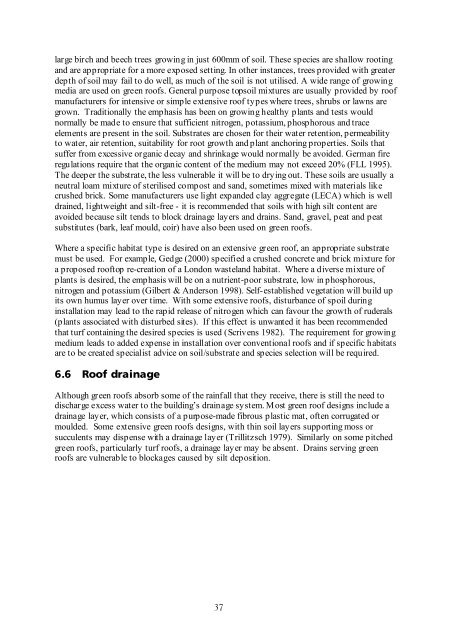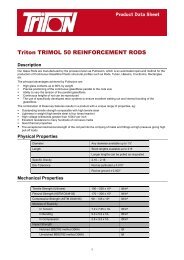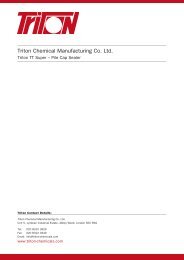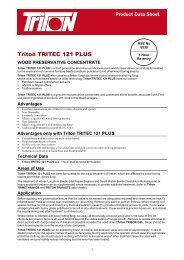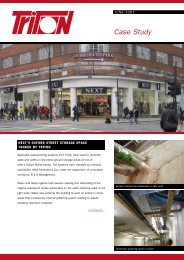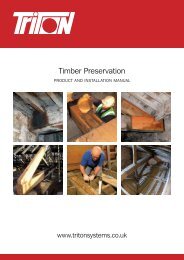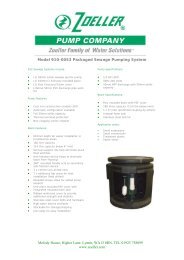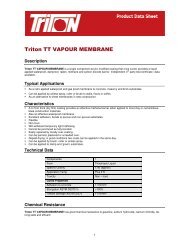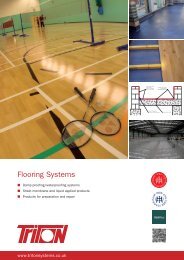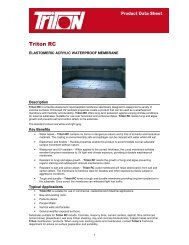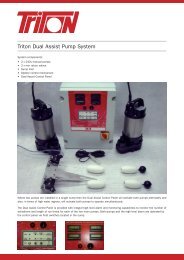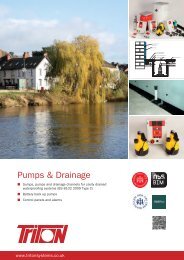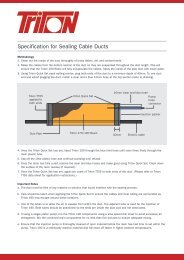Green Roofs - GreenSpec
Green Roofs - GreenSpec
Green Roofs - GreenSpec
- No tags were found...
Create successful ePaper yourself
Turn your PDF publications into a flip-book with our unique Google optimized e-Paper software.
large birch and beech trees growing in just 600mm of soil. These species are shallow rootingand are appropriate for a more exposed setting. In other instances, trees provided with greaterdepth of soil may fail to do well, as much of the soil is not utilised. A wide range of growingmedia are used on green roofs. General purpose topsoil mixtures are usually provided by roofmanufacturers for intensive or simple extensive roof types where trees, shrubs or lawns aregrown. Traditionally the emphasis has been on growing healthy plants and tests wouldnormally be made to ensure that sufficient nitrogen, potassium, phosphorous and traceelements are present in the soil. Substrates are chosen for their water retention, permeabilityto water, air retention, suitability for root growth and plant anchoring properties. Soils thatsuffer from excessive organic decay and shrinkage would normally be avoided. German fireregulations require that the organic content of the medium may not exceed 20% (FLL 1995).The deeper the substrate, the less vulnerable it will be to drying out. These soils are usually aneutral loam mixture of sterilised compost and sand, sometimes mixed with materials likecrushed brick. Some manufacturers use light expanded clay aggregate (LECA) which is welldrained, lightweight and silt-free - it is recommended that soils with high silt content areavoided because silt tends to block drainage layers and drains. Sand, gravel, peat and peatsubstitutes (bark, leaf mould, coir) have also been used on green roofs.Where a specific habitat type is desired on an extensive green roof, an appropriate substratemust be used. For example, Gedge (2000) specified a crushed concrete and brick mixture fora proposed rooftop re-creation of a London wasteland habitat. Where a diverse mixture ofplants is desired, the emphasis will be on a nutrient-poor substrate, low in phosphorous,nitrogen and potassium (Gilbert & Anderson 1998). Self-established vegetation will build upits own humus layer over time. With some extensive roofs, disturbance of spoil duringinstallation may lead to the rapid release of nitrogen which can favour the growth of ruderals(plants associated with disturbed sites). If this effect is unwanted it has been recommendedthat turf containing the desired species is used (Scrivens 1982). The requirement for growingmedium leads to added expense in installation over conventional roofs and if specific habitatsare to be created specialist advice on soil/substrate and species selection will be required.6.6 Roof drainageAlthough green roofs absorb some of the rainfall that they receive, there is still the need todischarge excess water to the building’s drainage system. Most green roof designs include adrainage layer, which consists of a purpose-made fibrous plastic mat, often corrugated ormoulded. Some extensive green roofs designs, with thin soil layers supporting moss orsucculents may dispense with a drainage layer (Trillitzsch 1979). Similarly on some pitchedgreen roofs, particularly turf roofs, a drainage layer may be absent. Drains serving greenroofs are vulnerable to blockages caused by silt deposition.37


